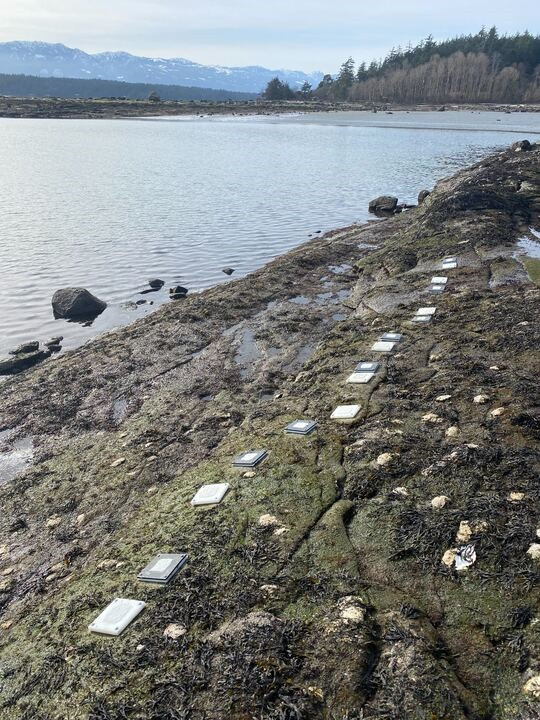Black and White Tiles
A temperature manipulation experiment in the rocky intertidal
Why are we interested in manipulating temperature?
The intertidal zone is a highly dynamic environment and is naturally exposed to a wide range of environmental variables, including temperature. As such, the organisms that make up intertidal communities have adapted to withstand a constant fluctuation of environmental conditions. However, despite their adaptability, these communities are highly vulnerable to our changing climate. In recent years, heat waves and cold snaps have become more frequent, and more extreme across much of the coast. With these extreme weather events predicted to increase both in frequency and intensity, we expect to see shifts in intertidal community composition as less tolerant species are replaced by species that can withstand greater environmental variability.
How are we manipulating temperature in the field?
The Black and White tile experiment aims to investigate the effects of extreme temperature events on various sessile organisms - including barnacles, mussels, oysters, snails, seaweeds, and others - in rocky intertidal environments. Working with communities and partners, we are establishing a network of six sites across the Salish Sea, where a series of black and white tiles will be deployed in the mid intertidal on rocky shorelines. The different coloured tiles heat up at different rates, with black tiles ranging from 2-6°C warmer than white tiles (Kordas et al., 2014). We leave the tiles out for 18 months and check up on them regularly to take photos and record the coverage of different species. This allows us to investigate the effects of warming on intertidal invertebrate settlement and succession, and how that varies throughout the seasons.
Want to learn more or get involved? Reach out to us at sentinels@hakai.org






